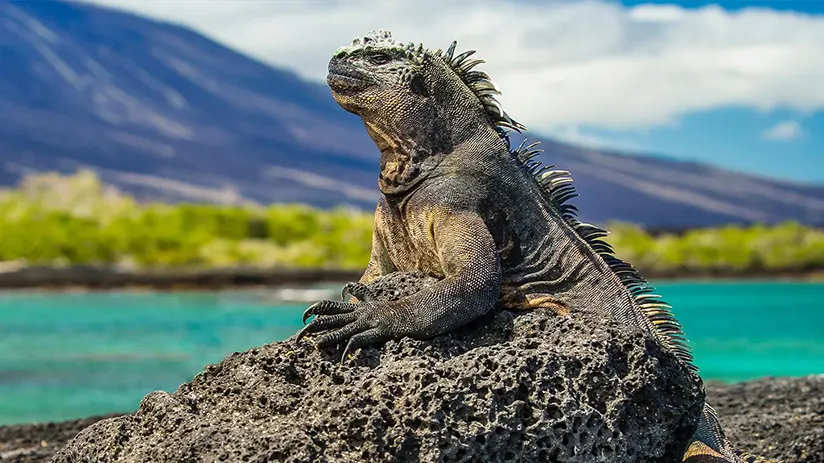Have you ever imagined that in Ecuador, there is a unique and captivating place out of the ordinary?
From the arrival of Charles Darwin in 1835 to the present day, the Galapagos Islands have inspired scientists, adventurers, and nature lovers alike. The archipelago is famous for its extraordinary biodiversity and its crucial role in the history of science. Join Machu Travel Peru on its virtual journey through these enchanted islands, where you can explore the fascinating wildlife, breathtaking volcanic landscapes, and culture. We will also explore the secrets of this natural paradise and discover what Galapagos has to offer.
Get ready to embark on an unforgettable adventure
- Where are located?
- Population and Economy
- Currency in Galapagos
- Why to go
- Getting there
- Weather
- Biodiversity & Conservation
- Sites & Activities
- Food & Beverage
- Recommendations
- Frequently questions
Where are located?
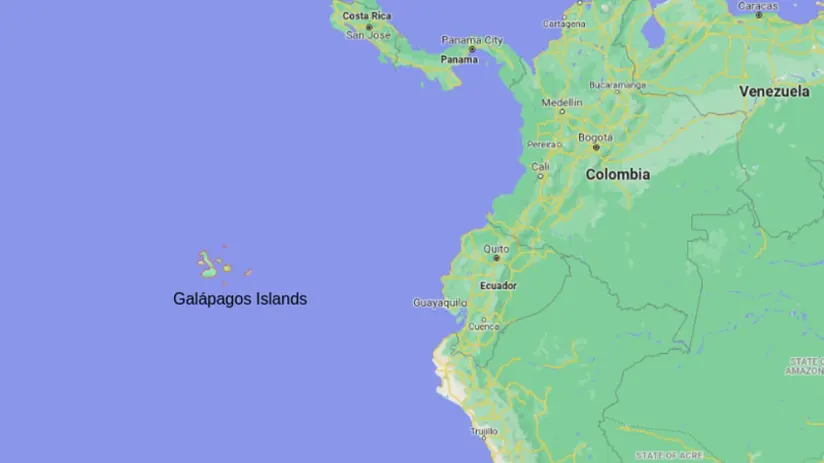
The Galápagos Islands, located in the eastern Pacific Ocean about 906 kilometers off the coast of mainland Ecuador, is a breathtaking archipelago known for its fantastic biodiversity. With 18 main islands, 3 smaller islands, and 107 rocks and islets, this unique cluster lies squarely on the equator, spanning from about 0.5° to 1.5° south latitude and 89.5° to 92.5° west longitude.
Puerto Baquerizo, the archipelago’s political and administrative capital, is organized into three major groups: western, central, and eastern. The Galapagos Islands, famed for influencing Charles Darwin’s theory of evolution, are a UNESCO World Heritage Site and Ecuador’s national park. Their diverse ecosystems and huge marine reserves demonstrate their critical role in preserving the unusual.
Geography
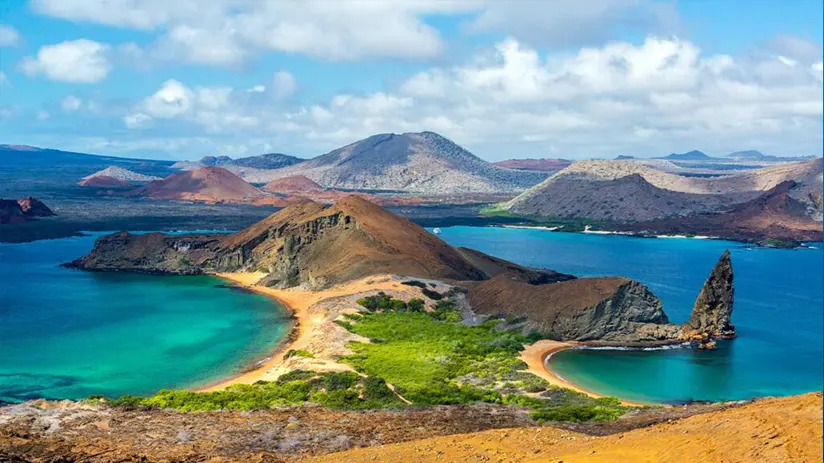
The Galápagos Islands have a diversified and fascinating geography. These volcanic islands, produced by tectonic activity, have diverse scenery, including volcanic craters, lava fields, cliffs, and beaches. Each island has its distinct habitat, ranging from lush mountains to desert lowlands, adding to the archipelago’s extraordinary biodiversity. The surrounding aquatic environment, which is part of a marine reserve, is teeming with life nourished by nutrient-rich ocean currents. Conservation activities are critical to preserving the islands’ fragile ecosystems and protecting its distinctive endemic species, making the Galápagos a unique destination for scientific research and ecotourism.
Island structure
The Galapagos Islands are an archipelago in the Pacific Ocean located 972 km off the coast of Ecuador. It consists of 13 large islands with an area greater than 10 km², 6 medium-sized islands with an area of 1 km² to 10 km², and 215 other small islands and rocky promontories of a few square meters distributed around the line of the terrestrial equator.
| 13 major islands (area greater than 10 km²) | 6 smaller islands (surface area between 1 and 10 km²) | 215 islets and rocks (total area of 7882 km²) | 5 inhabited and cultivated areas |
| Isabela Santa Cruz Fernandina San Salvador/ Santiago San Cristóbal Floreana/Santa María Marchena Española Baltra Santa Fé Pinzón Genovesa | Rábida Seymour Norte Wolf Tortuga Bartolomé Darwin. | San Cristóbal Santa Cruz Floreana Isabela Baltra |
History

Volcanic eruptions over millions of years shaped the islands. In the 19th century, Charles Darwin studied their exceptional diversity, leading to his groundbreaking natural selection theory. Since Ecuador’s claim to the archipelago in 1832, human settlement, primarily for agriculture, has transformed these islands.
They later recognized them as a national park and UNESCO World Heritage Site to safeguard their delicate ecosystems. Despite their remote location, the Galápagos have become a hotspot for tourism, presenting both economic opportunities and conservation challenges. Stakeholders grapple with the delicate balance between preserving these unique ecosystems and meeting the demands of sustainable tourism amidst increasing visitation.
Population and economy
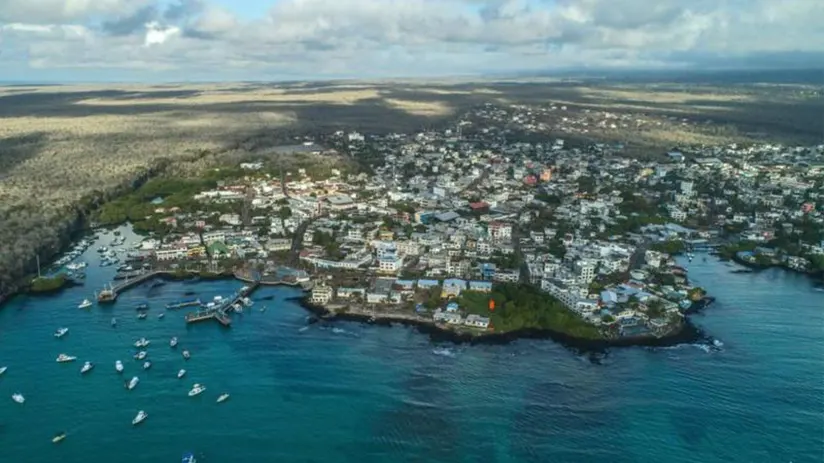
Scientists estimate that approximately 30,000 people inhabit the Galapagos Islands. Most of this population lives on three main islands: Santa Cruz, San Cristóbal, and Isabela. These islands have important services such as schools, hospitals, and transportation. The remaining islands have substantially lower populations, with some housing only a few dozen people.
Tourism is the primary source of income for the Galapagos Islands, playing a crucial role in their economy. This is because of the island’s diverse wildlife and plant life. Other sectors, such as fishing and agriculture, contribute, but to a smaller level.
Tourism attracts thousands of people each year, producing revenue from tourism services, hotels, and restaurants. However, strong laws are in place to protect the islands’ distinctive ecosystems. Fishing for local use and export, as well as subsistence agriculture, are key economic activities. In addition, government administration and public services are critical to the local economy, as they ensure proper management of fundamental resources and services.
Currency in Galapagos

The US dollar is the official currency of the Galapagos Islands. Businesses do not widely accept traveler’s checks, so it is advisable to use cash or cards. You should also bring smaller bills, as you will not be able to use anything larger than $20.
Puerto Ayora, Santa Cruz Island, has two banks with ATMs and an ATM at the Proinsular store. However, there is only one bank with an ATM in Puerto Baquerizo Moreno, San Cristóbal Island.
Most small shops, hotels, and restaurants do not take credit cards. Larger hotels and finer restaurants may, however, have a 5-10% surcharge applied to the bill for credit card payments where the cards are.
Why to go
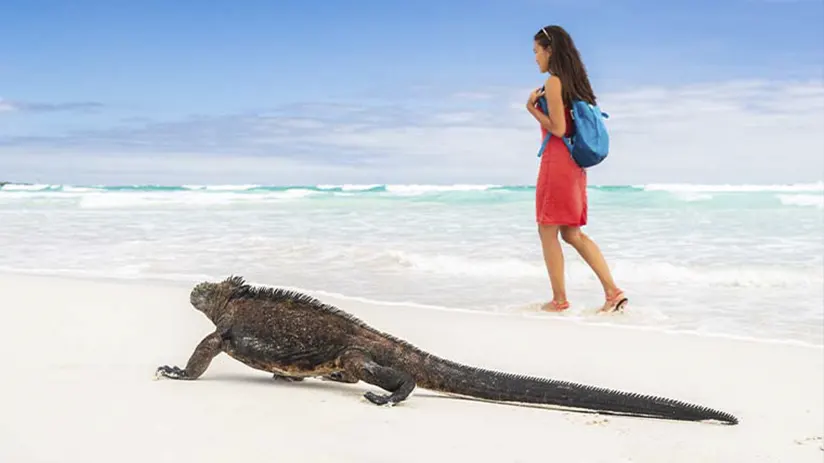
Travelers visit the Galápagos Islands for their stunning natural beauty and the opportunity to witness evolution in action.
The group of islands is well-known for its giant tortoises and playful sea lions, which are unique to this place.” It is a unique living laboratory for studying these animals.”
The volcanic landscape and clear waters provide an excellent setting for exciting adventures. You can go snorkeling with marine iguanas or hike through a unique terrain. The opportunities for exploration and discovery are endless in this stunning environment.
Aside from its beauty, the Galápagos have great scientific value, driving conservation initiatives and continuous research. Visitors help care for this endangered ecosystem for future generations to enjoy.
Getting there
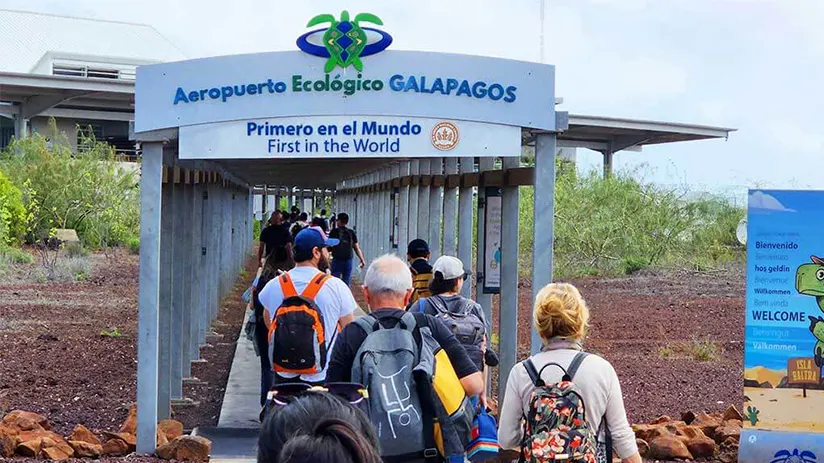
Getting to the Galápagos Islands typically involves a combination of flights and possibly boat transfers, depending on your point of departure and which island you want to visit. Here’s a general overview of how to get there:
- International Flight to Ecuador: Most travelers first fly into Ecuador’s Mariscal Sucre International Airport in Quito or José Joaquín de Olmedo International Airport in Guayaquil. These cities serve as the main hubs for flights to the Galápagos.
- Domestic Flight to Galápagos: From Quito or Guayaquil, you’ll need to take a domestic flight to one of the two main airports in the Galápagos Islands: Seymour Airport (GPS) on Baltra Island or San Cristóbal Airport (SCY) on San Cristóbal Island. The flight takes around 2 to 3 hours, and the airlines operating these routes include LATAM, Avianca, and TAME.
- Transfers to Your Final Destination: Once you arrive at either Baltra or San Cristóbal airport, you’ll need to take a short ferry ride to cross to Santa Cruz Island or San Cristóbal Island, respectively. From there, you can either take a domestic flight to other islands if needed or arrange for ground transportation to your accommodations.
- By Sea: In addition to flying, there are also cruise options available for those who prefer a maritime adventure. Many cruises depart from either Baltra or San Cristóbal and offer multi-day itineraries exploring various islands in the archipelago. Some smaller boats may also offer inter-island transportation services.
It’s important to note that visitors to the Galápagos Islands must obtain a Transit Control Card (TCC) and pay an entrance fee upon arrival. Also, travel arrangements should be made well in advance, especially during peak tourist seasons, as flights and accommodations can fill quickly.
Weather
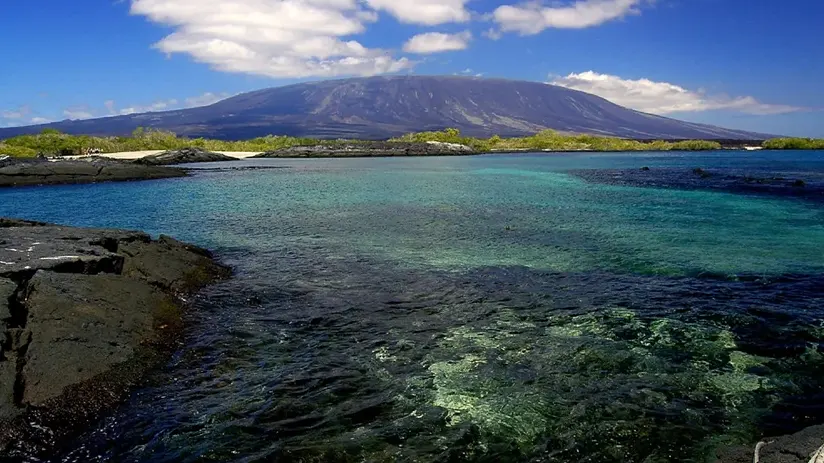
The Galapagos Flora is vast, and plants are the foundation for all life on the islands. With approximately 560 native species of “higher” plants (plants that arrived on the islands naturally), almost one-third of which are endemic to the islands, Galapagos’ plant life is as spectacular as its animals. Many species differ so significantly from others that they are generally classified as endemic.
Weather conditions
January | Average high temperatures: around 29°C (84°F). Average low temperatures: approximately 23°C (73°F). Expect warm and humid conditions with intermittent light showers. The ocean remains comfortably warm, typically ranging from 24-26°C (75-79°F), perfect for swimming and snorkeling. |
February | Average high temperatures: around 29°C (84°F). Average low temperatures: approximately 23°C (73°F). December sees a transition to warmer weather along with increasing humidity. The rainy season begins, bringing occasional afternoon showers to the islands. These detailed temperature ranges provide insight into what visitors can expect throughout the year in the Galapagos Islands. Keep in mind that slight variations may occur depending on the specific island and elevation. |
March | Average high temperatures: around 29°C (84°F). Average low temperatures: approximately 23°C (73°F). Expect warm and humid conditions with intermittent light showers. The ocean remains comfortably warm, typically ranging from 24-26°C (75-79°F), perfect for swimming and snorkeling. |
April | Average high temperatures: about 30°C (86°F). Average low temperatures: around 24°C (75°F). Similar to January, February continues with warm and humid weather. Seas are generally calm, offering excellent visibility for underwater activities like diving and snorkeling. |
May | Average high temperatures: hovering at about 29°C (84°F). Average low temperatures: typically around 24°C (75°F). May brings warm and dry weather, with sunny days dominating the forecast. It’s a prime time for observing the vibrant activity of sea lions and sea birds. |
June to November | Average high temperatures: hovering at about 29°C (84°F). Average low temperatures: typically around 24°C (75°F). May brings warm and dry weather, with sunny days dominating the forecast. It’s a prime time to observe the vibrant activity of sea lions and sea birds. |
December | Average high temperatures: about 30°C (86°F). Average low temperatures: around 24°C (75°F). Similar to January, February continues with warm and humid weather. Seas are generally calm, offering excellent visibility for underwater activities like diving and snorkeling. |
Seasons
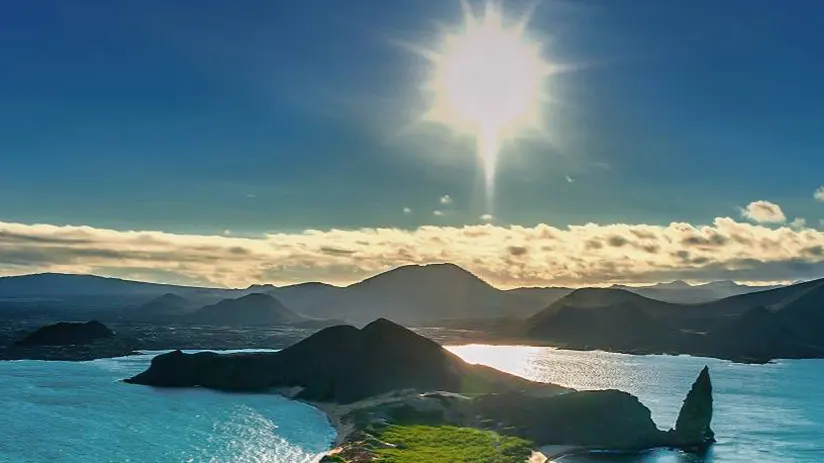
The Galapagos Islands’ weather is divided into two seasons: warm/wet (December to June) and cool/dry (June to November). Here’s a breakdown of the seasons:
Warm/wet season (December–June)
This season brings warmer temperatures and higher humidity. The ocean is also warmer during this time, making swimming and snorkeling more enjoyable.
Rainfall is more likely throughout these months, with torrential downpours occurring occasionally, particularly from January to March.
The increasing rainfall causes the vegetation to become lush and green throughout this season.
Many species, including sea turtles and land birds, reproduce during this season, making wildlife abundant.
Cool/dry season (June-November)
This season has milder temperatures and lesser humidity. Although the ocean’s temperature drops somewhat, marine life remains active and abundant.
Rainfall is light during these months, with occasional drizzles or mists, especially in the highlands.
The vegetation begins to dry out, and the environment may appear more bleak than in the wet season.
Wildlife activity remains strong, providing excellent opportunities for birdwatching and hiking.
Diversity & Conservation
The Galapagos Islands boast unparalleled diversity, with species found nowhere else on earth, yet they face significant conservation challenges. Invasive species, overfishing, habitat destruction, pollution, and climate change threaten these unique ecosystems. Conservation efforts, led by the Galapagos National Park and supported by various stakeholders, focus on invasive species control, sustainable tourism, research, and community involvement.
Fauna
The Galápagos Islands are famous for their unique and diverse wildlife. Here are some notable examples of fauna found in the Galápagos:
Giant tortoises
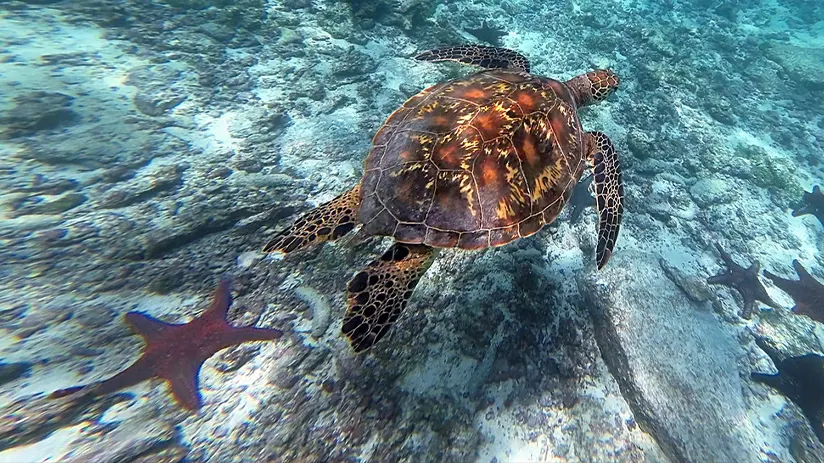
The giant tortoise is one of the most important animals in this place. It has a beautiful shell and flippers, which allow it to swim.
Marine iguanas
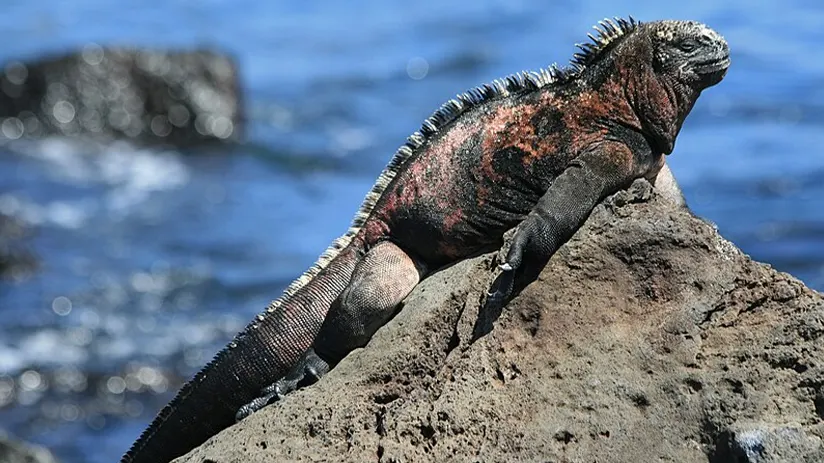
These unique iguanas are the only species of iguana that forage in the sea. They feed on algae and can often be seen basking on rocks along the shoreline.
Blue-footed bobby
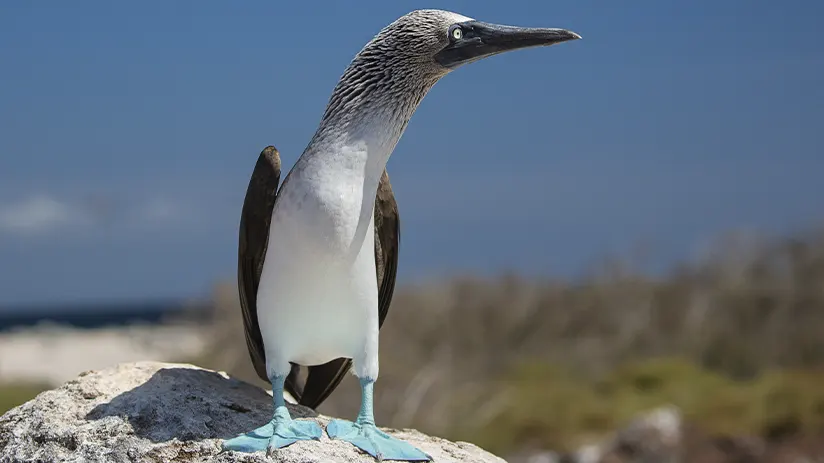
These seabirds are known for their bright blue feet, which they use in elaborate courtship displays. They nest on several islands in the archipelago.
Galápagos penguin
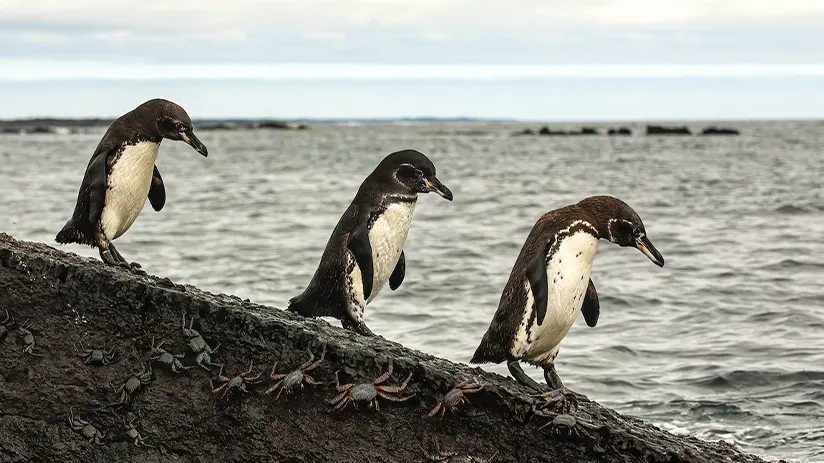
Galápagos penguins, the only penguin species found north of the equator, thrive in the warm waters of the islands. These penguins, the smallest species of their kind, actively swim and hunt in the waters surrounding the Galápagos.
Galápagos sea lion
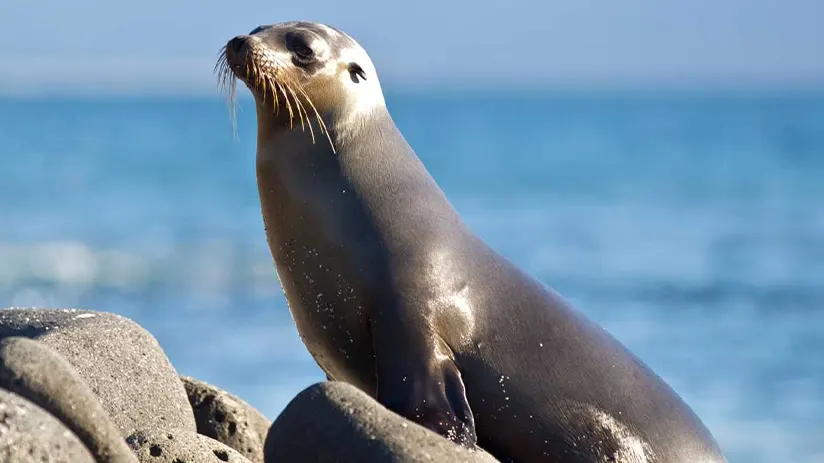
These playful and curious creatures can be found lounging on beaches throughout the islands. They are often encountered while snorkeling or diving, where they are known to approach humans closely.
Galápagos fur seals

Similar in appearance to sea lions, Galápagos fur seals are smaller and have thicker fur. They are found primarily on the western islands of the archipelago.
Flora
The Galapagos’ extensive plant life serves as the bedrock of all island life. This archipelago is home to approximately 560 indigenous species of “advanced” flora that naturally settled on the islands.
Almost 33% of the plants in the Galapagos are only found on the islands. This makes the flora there just as remarkable as the wildlife. Certain species exhibit such unique characteristics that scientists classify them as endemic. Here are some examples of the noteworthy fauna discovered in the Galápagos:
Giant cactus
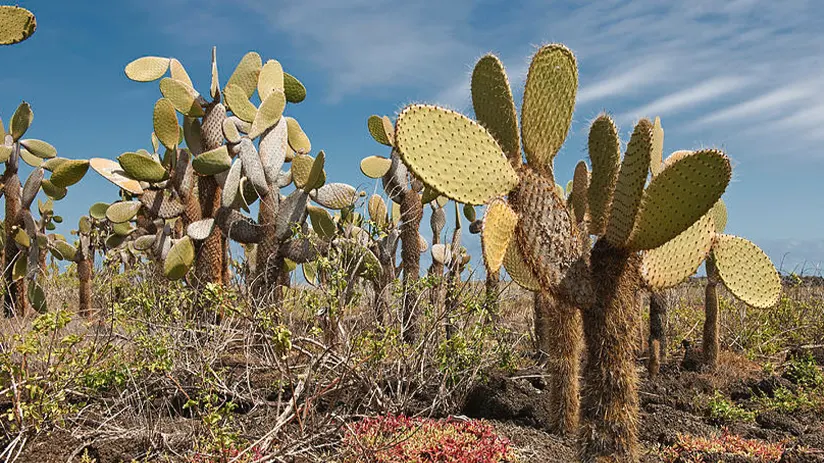
These cactus are a staple food for the iconic Galápagos giant tortoises. They have evolved with the tortoises, their tough skin protecting them from being eaten, and they provide moisture and sustenance to the tortoises.
Galápagos scalesia
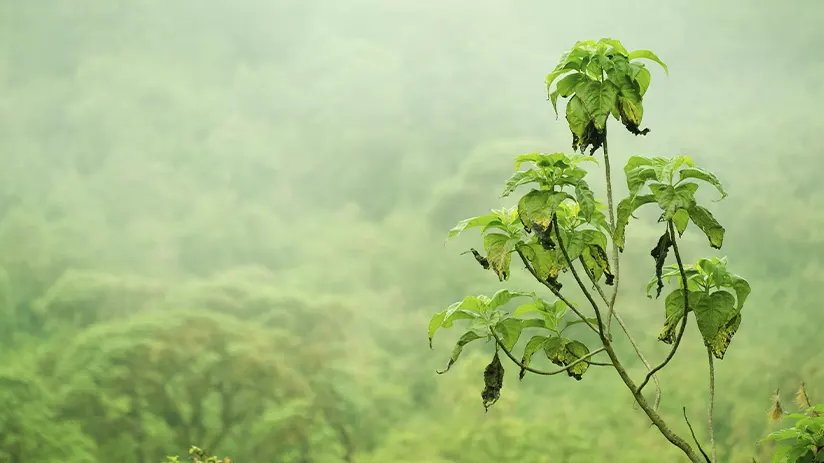
The Scalesia plants in the Galápagos Islands are like Darwin’s finches of the plant world. They have evolved into different species adapted to specific environments on different islands.
Lava cactus
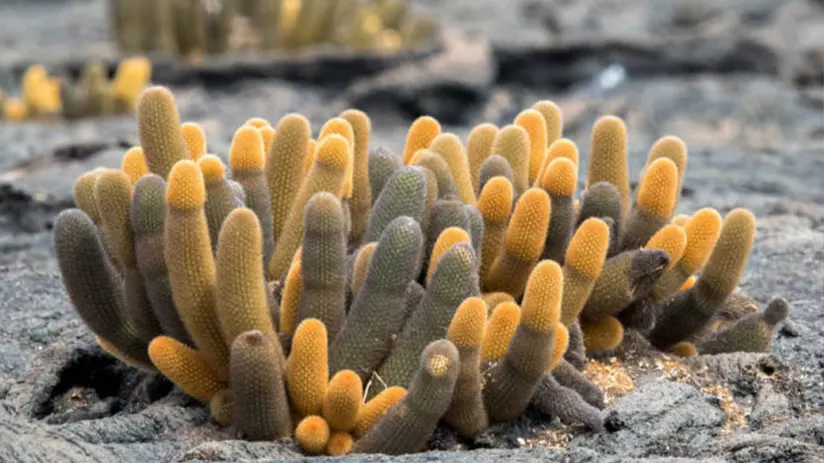
These small cactus are among the first plants to colonize new lava fields. Their succulent stems store water, allowing them to survive in the harsh volcanic environment.
Galápagos carpet weed
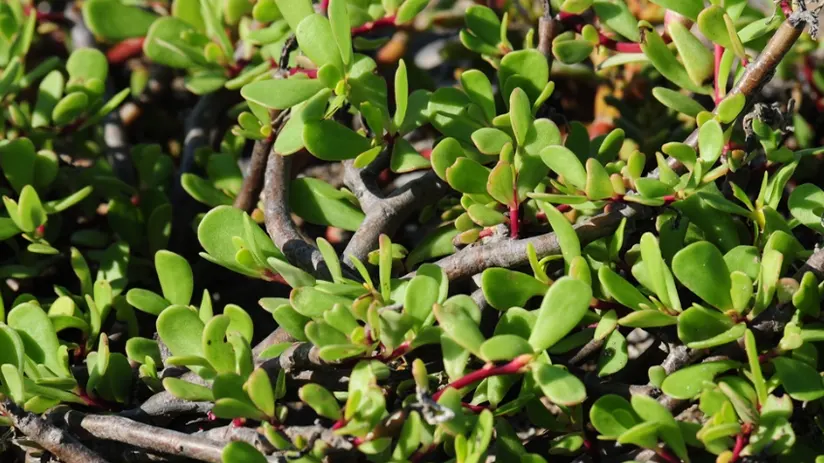
This succulent plant is commonly found in coastal areas of the Galápagos Islands. It plays a crucial role in stabilizing sandy soils and preventing erosion.
Galápagos passionflower
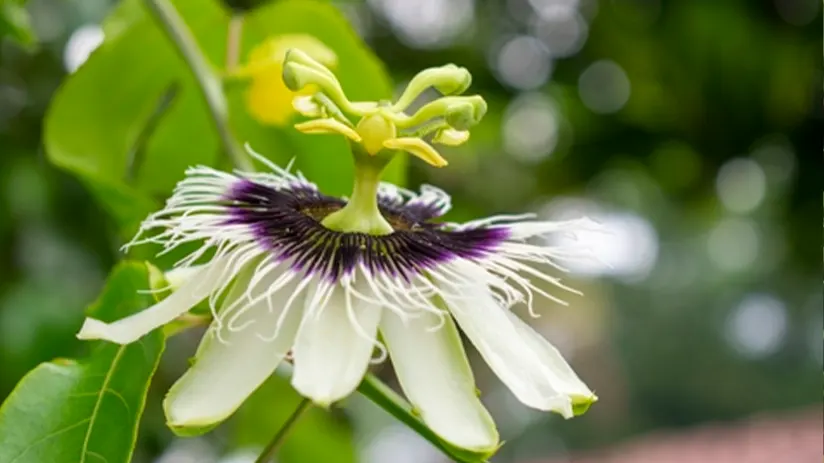
Also known as “stinking passionflower” due to its unpleasant odor when crushed, this vine is found in various habitats across the islands and is a food source for several species of butterflies.
Sights & Activities
Ecuador has it all – beaches, wildlife, mountains, jungles, volcanoes, culture, food, and history. With four distinct regions in one country, it offers everything you could want and more. We´re sharing some of our top attractions (and what you should do there!) throughout the Andes, Amazon, Galápagos Islands, and Pacific Coast.
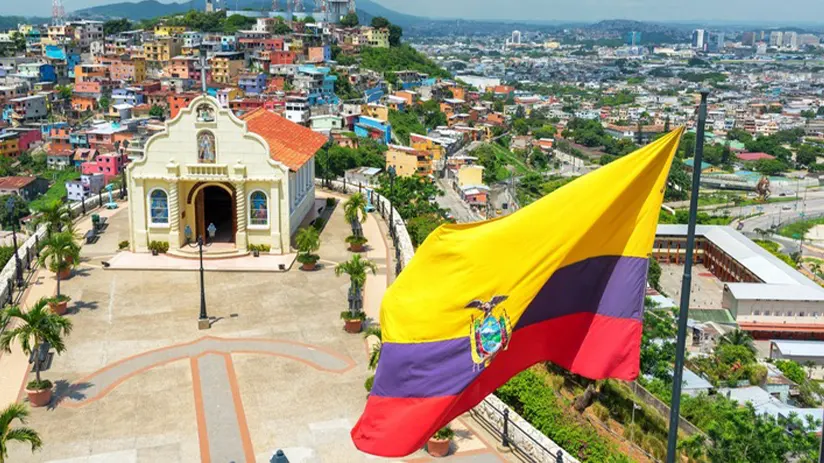
Top attractions
The Galapagos Islands are famous around the world. Many visitors can see incredible landscapes and natural habitats.
A. Swim with giant tortoises
The Galapagos Islands are famous for their giant tortoises, which can be found on several islands. Visitors can see them in their natural habitat and learn about conservation efforts to protect these iconic creatures.
B. Snorkeling and diving
The waters surrounding the Galapagos Islands are teeming with marine life, including sea lions, sharks, rays, and colorful fish. Snorkeling and diving tours offer visitors the opportunity to explore coral reefs and encounter diverse underwater species.
C. Charles Darwin Research Station
Located on Santa Cruz Island, the Charles Darwin Research Station is dedicated to the conservation and preservation of the unique flora and fauna of the Galapagos Islands. Visitors can learn about ongoing research and conservation efforts, as well as see giant tortoises and other native species up close.
D. Bartolome Island
This volcanic island offers breathtaking landscapes, including panoramic views from its summit overlooking Pinnacle Rock. Visitors can hike along scenic trails, snorkel in crystal-clear waters, and observe unique wildlife such as Galapagos penguins and marine iguanas.
E. Isabela Island
Isabela Island, the biggest island in the Galapagos group, hosts a variety of ecosystems such as untouched beaches, volcanic terrains, and mangrove woodlands. Tourists have the opportunity to discover lava tubes, trek to the peak of Sierra Negra volcano, and witness emblematic creatures like blue-footed boobies and Galapagos tortoises.
F. Española Island
Known for its stunning beaches and abundant wildlife, Española Island is a must-visit destination for nature enthusiasts. Visitors can observe waved albatrosses nesting on the island’s cliffs, snorkel with sea lions, and hike along scenic trails to spot unique species such as marine iguanas and Galapagos hawks.
G. Santa Fe Island
This small island is home to a unique species of land iguana found nowhere else in the world. Visitors can hike along rocky trails, snorkel in turquoise waters, and relax on pristine beaches surrounded by stunning scenery.
These are just a few of the top things to do in the Galapagos Islands, but visitors to this remarkable archipelago can expect many more incredible experiences.
Best places to stay & Eat
The Galapagos Islands are a beautiful place with many different plants and animals. Visitors can enjoy exploring the natural environment and trying delicious food.
Dining in the Galapagos is a celebration of culinary diversity, from the extraordinary freshness of native seafood to the blending of world flavors. It perfectly complements immersion in this unique archipelago.
In this introduction, we will look at how the gastronomy experience intersects with the Galapagos trip, bringing a distinct sensory and cultural layer to the journey of exploring these enchanting islands.
1. Galapagos Cruises
Explore the amazing Galapagos Islands with Galapagos Cruises. See wildlife and beautiful landscapes on guided tours, snorkeling, boating, and bird watching. Enjoy a comfortable experience as you travel between islands.
2. Galapagos Islands tours
Embark on a unique journey with Galapagos Islands tours, where each instant is a captivating discovery of nature’s wonders. In the Galapagos, you can have close encounters with special animals like giant tortoises and blue-footed boobies. You can also enjoy exciting underwater adventures among colorful coral reefs and clear waters full of sea creatures. It’s a unique experience you won’t find anywhere else.”
Expert guides accompany visitors through varied habitats, explaining the islands’ rich natural history and the breakthrough evolutionary ideas inspired by Charles Darwin’s visit. Galapagos Tours is dedicated to sustainable tourism and preservation, ensuring not only exceptional experiences but also the protection of this distinctive UNESCO World Heritage Site for the enjoyment of future generations.
3. Accommodations
The Galapagos Islands offer an extensive variety of hotels, ensuring that every guest finds the ideal getaway to match their island journey.
For those seeking unrivaled luxury, the islands offer stunning resorts that redefine indulgence. Set amidst stunning scenery, these resorts provide lavish amenities, customized service, and spectacular ocean views. Every moment is designed to exceed expectations, from luxurious rooms to excellent dining experiences. Every moment is designed to exceed expectations from luxurious rooms.
For those seeking unrivaled luxury, the islands offer stunning resorts that redefine indulgence. Set amidst stunning scenery, these resorts provide lavish amenities, customized service, and spectacular ocean views. Every moment is designed to exceed expectations, from luxurious rooms to excellent dining experiences. Every moment is designed to exceed expectations from luxurious rooms.
Eco-lodges offer sustainable sanctuaries for ecologically aware guests. These accommodations encourage environmentally friendly methods, such as renewable energy and conservation measures. Guests can reconnect with nature, participate in eco-friendly excursions, and contribute to local conservation efforts.
Travelers on a tight budget can find comfortable and reasonable accommodations among the islands’ budget hotels and hostels. These simple yet inviting accommodations provide an ideal base for seeing the Galapagos’ attractions without sacrificing comfort or convenience.
For those seeking excitement on the high seas, multi-day cruises onboard ships or yachts provide an unrivaled exploration of the archipelago. These cruises offer a unique viewpoint on the Galapagos, combining luxury accommodations with immersive island-hopping adventures that allow guests to see remote places and various wildlife habitats.
Boutique hotels encapsulate the spirit of Galapagos charm, providing a more intimate and distinctive experience. These havens combine luxury with local culture, with stylish lodgings and an emphasis on environmentally friendly methods. Guests can immerse themselves in the island culture while receiving customized service and relaxing settings.
Lastly, vacation rentals provide a home away from home for families and groups, offering privacy, flexibility, and a chance to live like a local. Whether it’s a quiet house or a small apartment, these accommodations allow you to personalize your Galapagos experience.
Food & Beverage

Ecuador’s gastronomy is amazing because it combines indigenous heritage with colonial history. You can taste different flavors, textures, and dishes, ranging from Ecuadorian ceviche to asado of guinea pig.
Here, I will show you some typical options of the Galapagos Islands, which will invite you to have a unique and magical experience of flavors and culture.
A. Ceviche
Ecuadorian dish found throughout Ecuadorian territory. It is prepared with cooked seafood, sour orange, and tomato; you can add tomato sauce and mustard to taste.
B. Lobster
It is a typical dish of the Galapagos Islands, composed of exquisite lobsters of the same archipelago that are red and with an exquisite flavor. You can also experience refined flavors between salty and sweet nuances.
C. Encebollado
When you visit the Galapagos, make sure to try a traditional dish. It is made with tuna or albacore, yucca or red onion, tomato, cilantro, chicken chili, and cumin. The dish is best enjoyed for breakfast or lunch because of its rich flavors. It is best enjoyed for breakfast or lunch due to its rich flavors.
D. Canelazo
It is a traditional drink from the Ecuadorian highlands. It is prepared by mixing water, azucar, and aguardiente. It is ideal for cold nights or when it rains.
E. Galapagos coffee
Ecuadorian coffee is an acidic and bitter drink. Its aroma is similar to earth or ash and accompanies the drinking experience with a pleasant sensation on the consumer’s palate. You can try it at breakfast, in the afternoon, or in the evening.
F. Horchata tea
This beverage is a tea-type drink made from a variety of herbs and flowers, including cancel or bloodleaf, lemon, and geranium, among others.
Recommendations
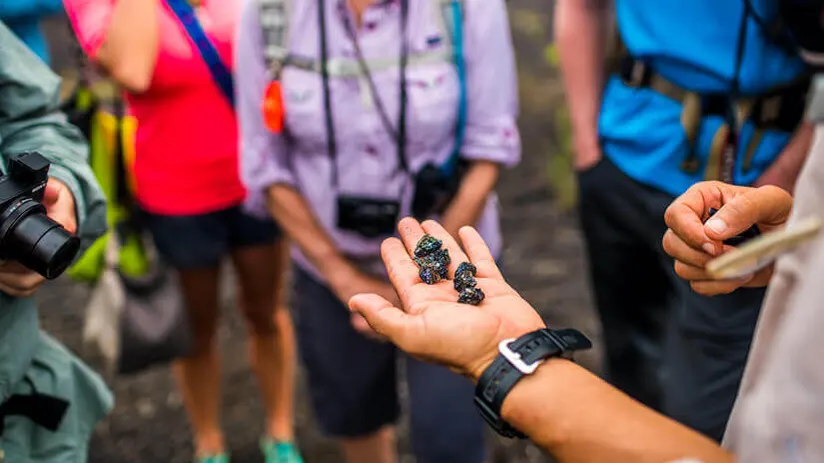
Traveling to the Galapagos Islands is an adventure unlike any other, offering a chance to witness unique wildlife, stunning landscapes, and unparalleled natural beauty. Here are some recommendations to help you make the most of your trip:
Plan: Start planning your trip well ahead of time, especially if you’re visiting during peak seasons. Book accommodations, tours, and flights early to secure the best options and prices.
Choose the Right Tour: Consider joining a guided tour led by experienced naturalist guides. These tours provide insights into the islands’ ecology, wildlife, and history, ensuring a more enriching experience.
Pack Wisely: Pack lightweight, breathable clothing suitable for warm weather, including comfortable walking shoes, swimwear, and a hat. Don’t forget essentials like sunscreen, insect repellent, and a reusable water bottle.
Respect the Environment: Follow park regulations and guidelines to minimize your impact on the fragile ecosystems of the Galapagos. Respect wildlife by keeping a safe distance, never feeding animals, and avoiding touching or disturbing them.
Frequently questions
1. What makes the Galapagos Islands so unique?
This place is unique because it has many species, plants, and stunning natural landscapes. They also contributed significantly to Charles Darwin’s idea of evolution by natural selection.
2. How do I go to the Galapagos Islands?
You can appreciate diverse wildlife, including the famous giant tortoises, marine iguanas, sea lions, and many other unusual species.
3. What kind of fauna can I expect to observe in the Galapagos?
Visitors can expect to witness a diverse range of wildlife, including giant tortoises, marine iguanas, blue-footed boobies, Galápagos penguins, sea lions, and many other unusual species.
4. Are there specific periods of the year that are ideal for traveling the Galápagos Islands?
You can visit the Galapagos Islands all year; however, the best time is during the nesting season because it offers the perfect opportunity for wildlife viewing.
5. Do I need a special permit to visit the Galapagos Islands?
Yes, visitors to the Galápagos Islands must get a tourist card and pay a national park admission charge. These permissions are typically arranged by tour organizers or airlines.
6. What activities are offered to tourists on the Galápagos Islands?
You can snorkel, kayak, hike, or walk and connect with nature.
“LIVE LIFE WITH NO EXCUSES, TRAVEL WITH NO REGRET”
The Galapagos Islands in Ecuador are an incredible natural wonder that dazzles with their breathtaking beauty. Their uniqueness stems from the richness of native flora and wildlife that enchant people who have the opportunity to explore their landscapes. From beautiful giant tortoises to unusual birds, every creature and area of these islands breathes an incomparable enchantment. Dive into its clear waters to discover a colorful and vibrant underwater world. In essence, the Galapagos Islands are more than just a tourist attraction; they are a reminder of our planet’s wonder and fragility, a place that should be protected and enjoyed for future generations.
Peru has so much to offer, it can be hard to know where to start. With many years of experience in the tourism sector, Machu Travel Peru is happy to help with anything regarding your trip to Machu Picchu and any tours around it. Make your Machu Picchu experience an unforgettable one!
